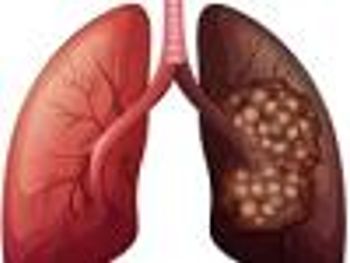
Dry eye disease affects visual function, activities of daily living, workplace productivity, and health-related quality of life.

Dry eye disease affects visual function, activities of daily living, workplace productivity, and health-related quality of life.

With the advent of highly active antiretroviral therapy, HIV-infected patients are more likely to die of causes other than AIDS.

Several public health interventions could prevent HIV transmission among injection drug users.

Interdisciplinary teams are commonplace in HIV care, but the inclusion of a pharmacist on these care teams is relatively rare compared with other disease states.

Treating type 2 diabetes with drugs and biologics that are most likely to be effective should be a health care priority.

Those who are HIV-negative but have risk factors for HIV can take pre-exposure prophylaxis with antiretroviral medications to protect themselves.

With multiple updates and differing guidelines across different countries, it may be hard for pharmacists to keep track of best practices for acute coronary syndrome (ACS).

The fear of pandemic avian influenza in 2004 spurred the CDC to initiate an international capacity-strengthening program.

Neuraminidase inhibitors prevent the spread of influenza within the body, but they don't directly eradicate the infection.

Cardiovascular disease accounts for 30% of all deaths worldwide, and it is not just 1 disease.

Patients who enroll in studies, including those for pre-exposure prophylaxis, may share their medication with friends and family who have health concerns of their own or the same diagnoses.

The burden of repeated insulin injections is often cited as a factor of resistance to starting traditional insulin products.

Researchers evaluate why HIV-infected individuals have lower magnitude responses to flu vaccines.

As the name suggests, human immunodeficiency virus is all about lowered immunity.

Supplementation could play a role in treating traumatic brain injury.

Ineffective antiretroviral regimens, improper dosing, and drug interactions are the most common medication errors in HIV patients.

The transition from an acute hospitalization back into the community introduces ample opportunities for medication errors, and HIV patients who need dosage adjustments and intense monitoring are particularly liable to them.

Endocrinologists seek to create an observational registry so researchers can study thyroid incidentalomas systematically.

Most patients with locally advanced non-small cell lung cancer with mediastinal lymph node involvement are generally not considered good candidates for surgery.

Diabetes drug interactions may decrease medication efficacy, increase toxicity, challenge adherence, and cause adverse events.

Patients with diabetes have a higher pill burden than the general population, so pharmacists should pay particular attention to potential drug interactions with antidiabetic agents.

Rosacea, a chronic inflammatory condition usually involving the face and the eyes, affects 16 million Americans of all genders, ages, races, and ethnicities.

Asplenic patients who contract encapsulated bacterial infections are vulnerable, so pharmacists should step forward to educate this population about complete vaccination coverage.

Hepatitis B tends to be more aggressive in HIV patients, increasing the risk of cirrhosis, end-stage liver disease, and hepatocellular cancer.

Global gout treatment guidelines tend to differ on which drug should be used as first-line therapy for gout flares.

Coinfection with hepatitis B virus isn't uncommon among those infected with HIV.

Many Americans neglect a powerful way to prevent influenza infection and reduce its $87 billion related cost to the United States: flu shots.

How complementary and alternative medicine contributes to polypharmacy and potentially inappropriate medication use in older cancer patients is unclear.

Various health care professionals employ motivational interviewing to address cardiovascular risk factors

Limited evidence has examined dual therapy in treatment-experienced diabetes patients.